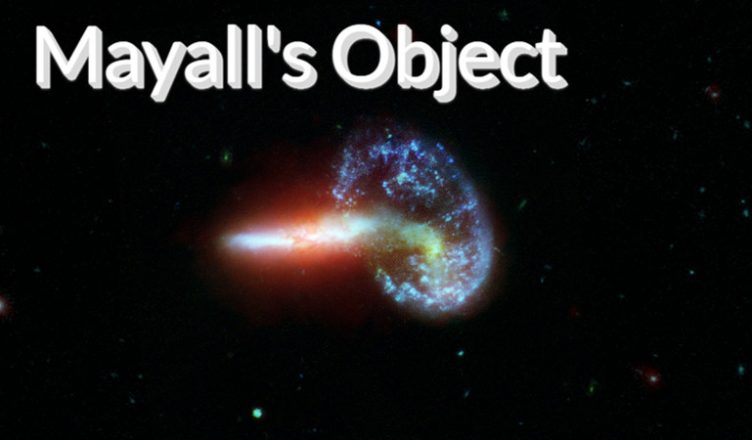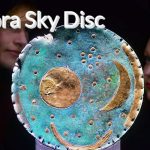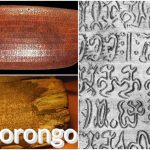Mayall’s Object, also known as Arp 148, VV 032, MCG+07-23-019, and APG 148, is a brilliant gem in the realm of astronomy. Located in the Ursa Major Constellation, often referred to as the Great Bear Constellation, Mayall’s Object shines like a sparkling jewel in the night sky. It resides at a distance of approximately 450 million light-years from our Earth, and its age is a staggering 12.85 billion years, encapsulating the distant history and mysteries of the cosmos.Mayall’s Object is, in fact, the result of the fusion of two galaxies, a breathtaking masterpiece of galactic collision. The interaction of these two galaxies has given birth to a unique ring-shaped galaxy, resembling a radiant diamond ring, while its trailing tail resembles a stream of twinkling stars traversing the dark expanse of the universe.
The beauty and enigma of Mayall’s Object are captivating, making it a treasure trove for astronomers and a practical example to delve deeper into understanding the universe and the evolution of galaxies. In this article, we’ve explored the origins and characteristics of Mayall’s Object, highlighting how it has become a unique gem within the cosmos.
Overview of Mayall’s Object
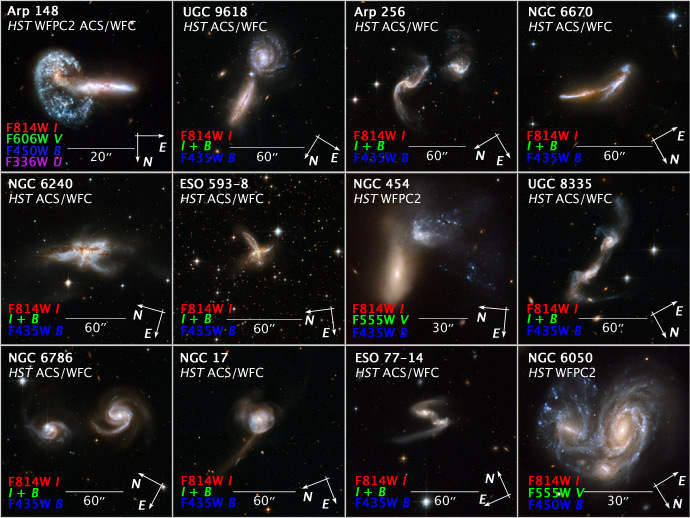
Mayall’s Object was discovered by American astronomer Nicholas Ulrich Mayall on March 13, 1940, using the Crossley Reflector at the Lick Observatory. Initially, Mayall’s Object was believed to be a galaxy reacting to intergalactic medium, but subsequent observations altered this perspective. Mayall’s Object, also classified under the Atlas of Peculiar Galaxies as Arp 148, is the result of two colliding galaxies located 500 million light-years away within the constellation of Ursa Major. When first discovered, Mayall’s Object was described as a peculiar nebula, shaped like a question mark. Originally theorized to represent a galaxy reacting with the intergalactic medium, it is now thought to represent the collision of two galaxies, resulting in a new object consisting of a ring-shaped galaxy with a tail emerging from it. It is thought that the collision between the two galaxies created a shockwave that initially drew matter into the center, forming the ring.
Title: “Unveiling the Enigma of Arp 148: Hubble Space Telescope’s 18th Anniversary Gift”
Arp 148 was captured by the Hubble Space Telescope as part of an investigation into colliding galaxies. This image was taken using the Wide Field and Planetary Camera 2 instrument and was released in 2008 alongside 59 other similar images, marking the 18th anniversary of the space telescope. Arp 148 is the astonishing outcome of two galaxies colliding, resulting in a ring-shaped galaxy and a long-tailed companion. The collision between the two parent galaxies created a shockwave effect that initially drew matter into the center and then caused it to propagate outwards in a ring. The elongated companion perpendicular to the ring suggests that Arp 148 is a unique snapshot of an ongoing collision. Infrared observations reveal a strong obscuration region that appears as a dark dust lane across the nucleus in optical light.
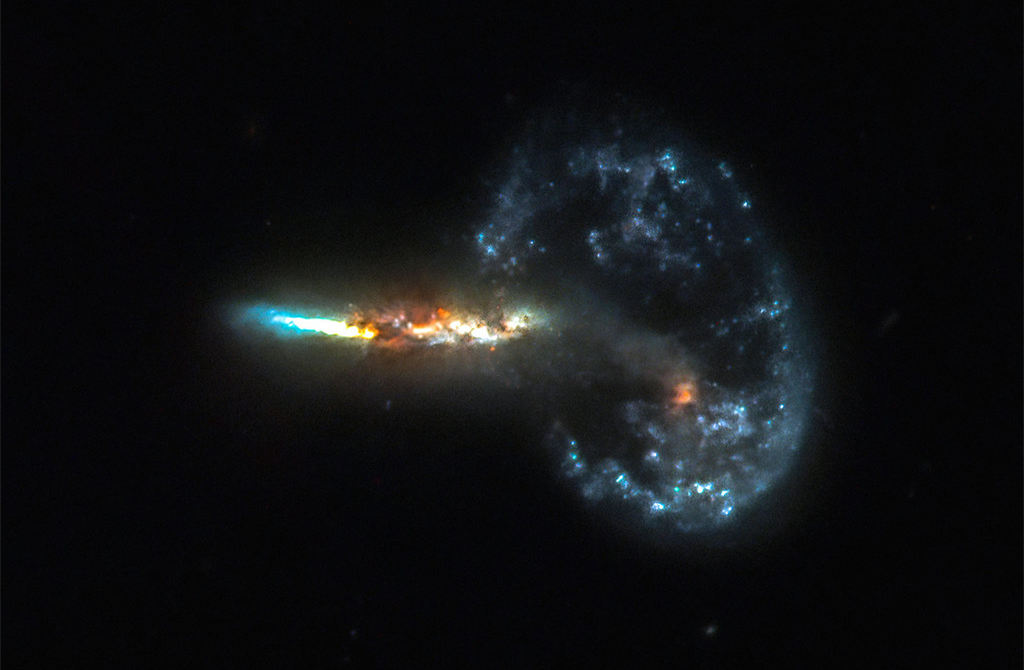
Arp 148 is affectionately nicknamed “Mayall’s Object” and is located in the Ursa Major constellation, approximately 500 million light-years away. This interacting pair of galaxies is included in Arp’s catalog of peculiar galaxies as number 148. This image is part of a large collection of merging galaxies captured by the Hubble Space Telescope, and it was released on April 24, 2008, to commemorate the telescope’s 18th anniversary. It was taken by the telescope’s Wide Field and Planetary Camera 2 instrument, designed and built by JPL.
END:
In conclusion, Mayall’s Object, or Arp 148, is undoubtedly a radiant gem in the universe, brimming with mysteries and beauty. As we delve deeper into our understanding of this galaxy, our curiosity and spirit of exploration will continue to lead us forward in uncovering more of its secrets. In the future, we can anticipate further research and observations to unveil the evolution and formation processes of Mayall’s Object. With the constant advancement of scientific technology, we will have more tools and methods at our disposal to gain a deeper insight into the physical and chemical processes within this galaxy. Furthermore, the study of Mayall’s Object will contribute to a more comprehensive understanding of the universe’s formation and evolution, shedding light on the interactions between galaxies and the structure of the cosmos. Mayall’s Object’s future is filled with promise, serving as an ongoing source of curiosity for scientists and space enthusiasts alike, as it continues to reveal the boundless mysteries of the universe.
